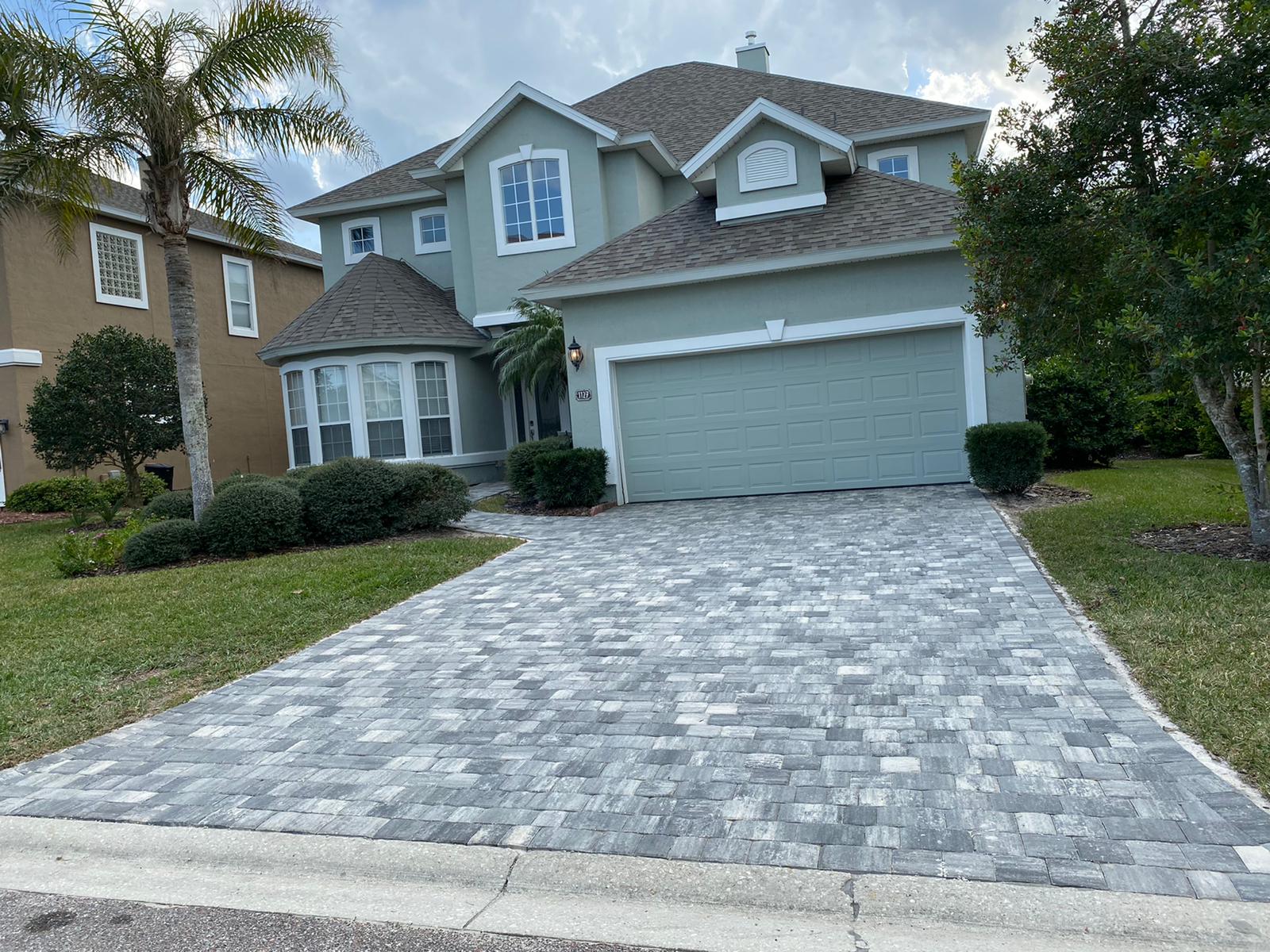Introduction to pavers
Paver color is derived from the raw materials used in manufacturing, which are pigments, oxides and other inorganic materials. The type of clay used will also contribute to the final color of the paver. For example, red clay will produce a reddish paver while white or tan clay will create more muted tones, so Pavers driveways have color completely throughout each unit.
Once the pavers are manufactured, a sealer is applied to protect the surface and enhance the beauty of the paving stones. The sealer does not change the inherent color of the pavers but can make them appear darker or richer.
The benefits of having color completely throughout each unit
When it comes to pavers driveways, one of the best things about them is that they have color completely throughout each unit. This means that no matter where you place them or how you arrange them, the color will be consistent throughout. This can be a great way to add a touch of personality to your outdoor space and make it truly your own.
Having color completely throughout each unit also helps keep paver projects looking good and consistent for many years. As the pavers age, they will not fade or discolor and their colors will stay vibrant and true. This can help ensure that your patio, walkway or driveway stands the test of time and keeps its attractive appearance for many years to come.
There are a few benefits that come along with having color completely throughout each paver unit. First, it creates a uniform look that can be really pleasing to the eye. Second, it can help to hide any imperfections in the paving stones themselves. And lastly, it can help to protect the pavers from fading over time.
The Different Types of Pavers driveways
There are two main types of pavers: those with color completely throughout each unit, and those with a solid base color with an accent color on top. Within these categories, there are a variety of different types of pavers to choose from.
Color-through pavers are available in a wide range of colors and styles. Because the color is consistent throughout the entire paver, these pavers are ideal for creating patterns or for use in areas where a high level of contrast is desired.
Solid base pavers are typically less expensive than color-through pavers and are available in a wider range of colors. These pavers are ideal for large projects where a consistent look is desired. The accent color on top of the solid base can be used to create interesting patterns or to add contrast to an area.
The different colors that are available for pavers driveways
When it comes to pavers, there are a variety of colors available to choose from. This is one of the many benefits of choosing pavers over other types of materials. With so many colors to choose from, you can easily find a color that will complement your home’s exterior.
Some of the most popular colors for pavers include:
Gray: Gray pavers are a popular choice because they provide a neutral canvas that can be easily dressed up with different accent colors.
Red: Red pavers are perfect for creating an inviting and warm atmosphere. They also add a touch of sophistication to any outdoor space.
Brown: Brown pavers are ideal for those who want to create a natural and rustic look. They also work well with homes that have earthy tones.
Blue: Blue pavers are perfect for creating a calming and serene atmosphere. They also work well with homes that have ocean or lake views.
How to choose the right color for your project of Pavers driveways
When considering what color of pavers to use for your project, it is important to think about the overall look you are trying to achieve. If you want a more natural look, consider using earth tones or muted colors. For a bolder look, brighter colors may be the way to go. It is also important to think about how the color of the pavers will complement other elements in your design, such as the color of your house or landscaping.
If you are still unsure what color to choose, we recommend going with a classic neutral like gray or tan. These colors go with everything and can help create a more cohesive look for your project.
How to choose the right paver for your project
When choosing pavers for your project, there are a few things to keep in mind. First, consider the overall look you are trying to achieve. Pavers come in a variety of colors, textures, and sizes, so it is important to select the ones that will best fit the space and complement the surrounding area.
Next, think about the purpose of the space. If it will be used for entertaining or as a gathering place, you’ll want to choose pavers that are large enough to accommodate furniture and foot traffic. If the space will be more decorative in nature, smaller pavers may be a better option.
Finally, factor in practical considerations such as budget and maintenance. Larger pavers can be more expensive than smaller ones, and certain types of pavers may require more upkeep than others. Keep all of these factors in mind when making your selection to ensure you choose the right paver for your project.
Pavers driveways Maintenance
Paver maintenance is easy and only requires a few simple steps to keep your pavers looking great for years to come. First, sweep your pavers regularly with a soft bristle broom to remove any dirt or debris. You can also hose them down with water if needed. Second, use a paver sealer every 1-2 years to protect the pavers from stains and weathering. Finally, avoid walking or driving on wet pavers, as this can damage the surface of the pavers.
Conclusion about Pavers driveways
Pavers driveways have color completely throughout each unit are an excellent choice for outdoor home improvement projects. They offer a wide range of colors and styles, as well as the ability to customize your design with creative patterns and borders. What makes pavers special is that they have color completely throughout each unit, meaning that fading or discoloration due to weathering is less likely over time. With proper installation and regular maintenance, you can ensure that your pavers will provide years of beauty and function in whatever space you choose to install them.

